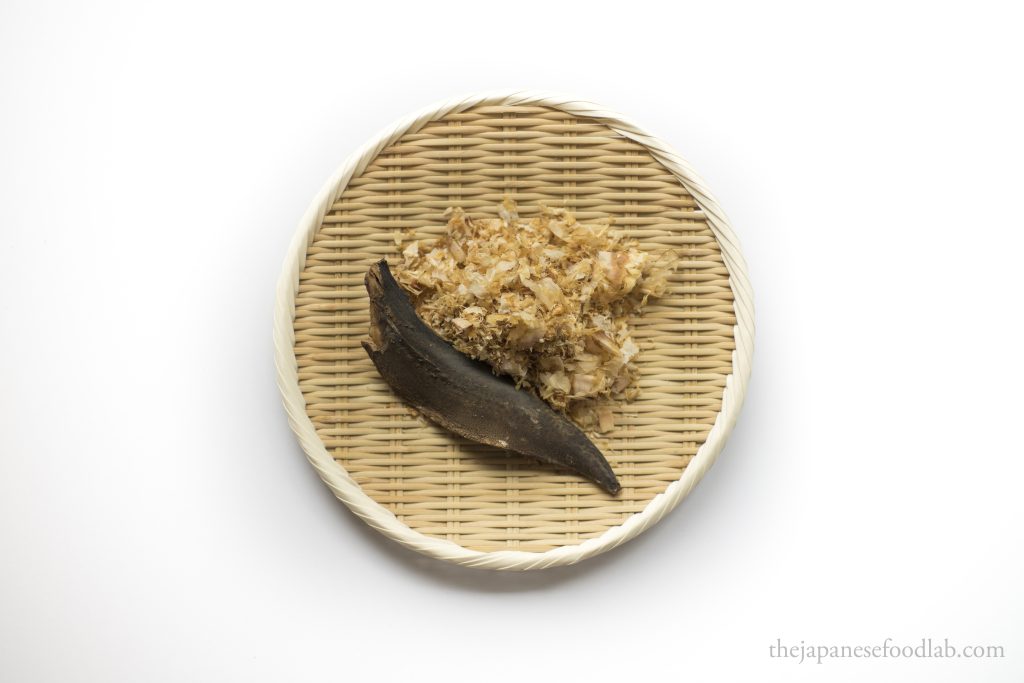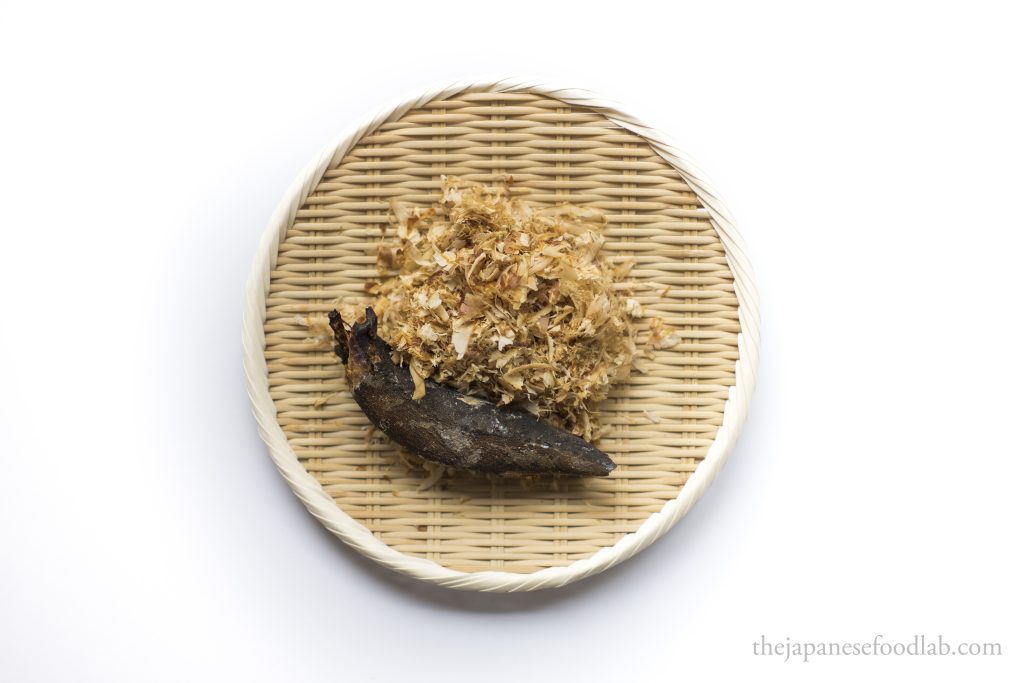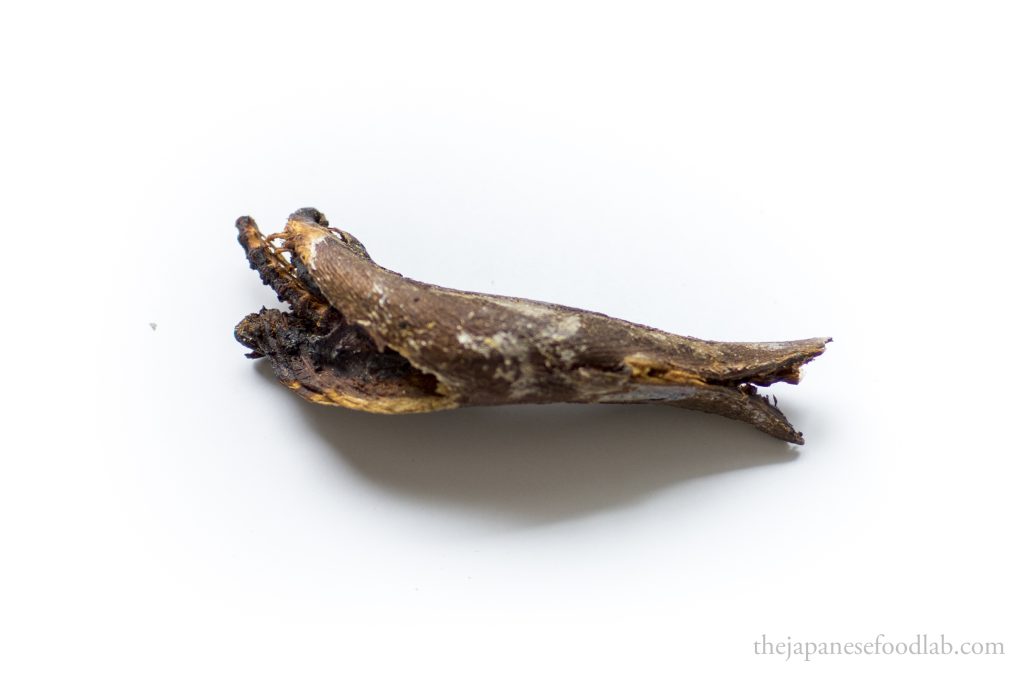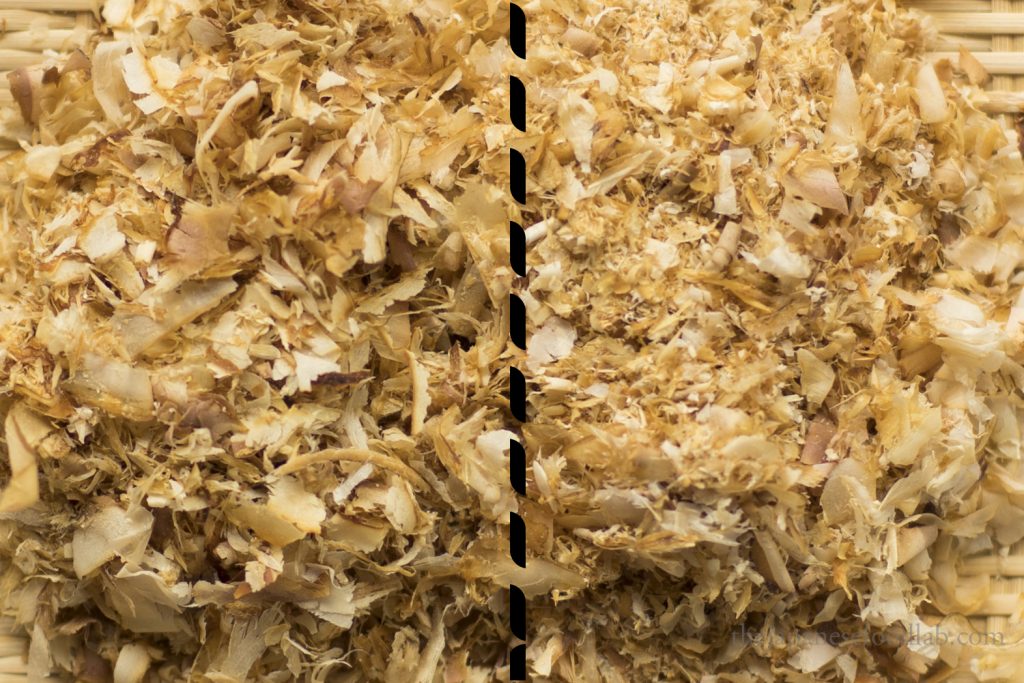This article is part of our series on other kinds of bushi. We recommend reading our article on how katsuobushi is made, how it is shaved, the different parts of katsuobushi and the different kinds of katsuobushi to better understand the terminology used here.

The mackerel used to make sushi is known as ‘true’ mackerel (マサバ), whilst the mackerel use to make sababushi is a specific kind known as gomasaba (ゴマサバ). This is because gomasaba has a lower fat content comparatively and is therefore ideal for mold growth.
Sababushi (鯖節)is processed the same way as katsuobushi in that it is cooked, beheaded, gutted and fileted before smoking to reduce moisture as much as possible. The majority of Sababushi on the market is processed to the arabushi stage. However, a small amount of it is fermented to the karebushi stage, which can take up to 6 months. These sell at more premium prices as they have a clearer and more intense umami.

Sababushi sits on the rich end of the taste spectrum, yielding a strong stock with a lip smacking mouthfeel but more uniquely, with a slightly sweet taste. Interestingly, it does not have a very unique taste or fishy taste at all and is therefore the go to bushi for mixing with other bushi to add body and sweetness, like urumebushi and sababushi, or muroajibushi and sababushi. For example, some soba restaurants have been known to use equal parts soudabushi, katsuobushi and sababushi for their soup stock. Because of its strong flavor, it is not suitable for light dishes like clear soups.

The filets from large mackerels from around 400g to 600g and above are smoked whole and not cut into a back and stomach piece. Similarly to soudabushi, these pieces are known as split sababushi (wari sababushi/割りサバ節) instead of turtle filets (kamebushi/亀節) as for katsuobushi. Smaller mackerel are smoked whole after the removal of the head and internal organs through the head cavity. These are known as round sababushi (maru sababushi/丸サバ節) and are prepared without cutting open the belly or fileting the fish.
Unique to mackerel with more recent processing technology, the smallest fish are processed into sababushi by only removing the heads and leaving the innards inside. These are known as pokkuribushi (ポックリ節) but are always shaved into flakes before being sold. Another unique processing method is pressing the mackerel filets with pressure to remove excess fat before smoking and drying. The resulting bushi are known as assakubushi (圧搾節) and are also not sold whole, but shaved into flakes before being sold.

Many places around Japan’s coast that coincide with the mackerel migration path (ゴマサバの回遊) do processed sababushi. As such, there isn’t a precise weight of mackerel that they use to determine if the mackerel should be made into split or round sababushi, or pokkuribushi. However, there are some trends. For example, sababushi from Numazu (沼津) in Shizuoka prefecture tend to process even larger fish into round sababushi, while those in Kagoshima prefecture, such as in Yakushima (屋久島) and Makurazaki (枕崎) tend to be smaller. Sababushi produced from the three named places above are all high quality, though we have found that from Yakushima to be exceptional.